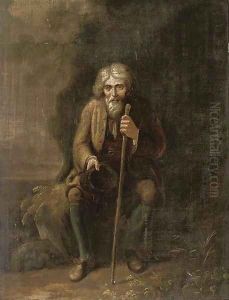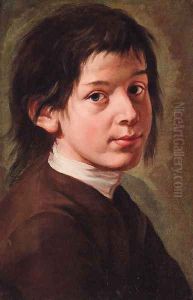Giacomo Francesco Cipper, Il Todeschini Paintings
Giacomo Francesco Cipper, also known as Il Todeschini, was a distinguished Baroque painter born in 1664 in Feldkirch, part of the Holy Roman Empire, which is now in Austria. His moniker, 'Il Todeschini', reflects his Germanic origins, with 'Todeschini' being an Italianized version of 'the German'. Despite this heritage, Cipper's artistic career flourished primarily in Italy, making significant contributions to the Italian Baroque movement.
Cipper's early life and training are not thoroughly documented, but it is evident that he moved to Milan early in his career, where he absorbed the rich artistic traditions of the Lombard region. His work soon began to reflect the influence of the naturalistic styles of the time, showing particular admiration for the works of Caravaggio and the Lombard painters, whose emphasis on realism and the dramatic use of light and shadow greatly impacted his artistic development.
Il Todeschini specialized in genre scenes, depicting everyday life with a vividness and attention to detail that brought his subjects to life. His paintings often portrayed peasants and the lower classes, imbuing them with dignity and a sense of importance that was not commonly found in the genre painting of his time. This focus on the common man, combined with his mastery of light, color, and texture, distinguished Cipper's work from that of his contemporaries.
Throughout his career, Cipper enjoyed patronage from various religious orders and noble families, which led to commissions not only in Milan but also in other Italian cities. Despite this success, he never strayed far from his roots, often painting scenes that reflected the hardships and joys of rural and urban lower-class life. His work provides a valuable glimpse into the social conditions of his time, rendered with a level of empathy and realism that was both pioneering and profound.
Giacomo Francesco Cipper, Il Todeschini, passed away in 1736 in Milan. Today, his paintings can be found in museums and private collections across Europe, celebrated for their contribution to the Baroque movement and their insightful portrayal of 17th and 18th-century life. His legacy endures as a testament to the power of art to capture the human condition with honesty and compassion.

